
- Subject:
- Applied Science
- Biology
- Life Science
- Material Type:
- Module
- Author:
- Tina B. Jones
- Date Added:
- 08/18/2019


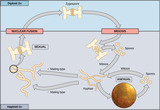
By the end of this section, you will be able to:Explain that meiosis and sexual reproduction are evolved traitsIdentify variation among offspring as a potential evolutionary advantage to sexual reproductionDescribe the three different life-cycle types among sexual multicellular organisms and their commonalities

By the end of this section, you will be able to:Explain that meiosis and sexual reproduction are evolved traitsIdentify variation among offspring as a potential evolutionary advantage to sexual reproductionDescribe the three different life-cycle types among sexual multicellular organisms and their commonalities
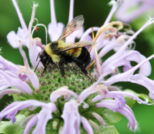
Bumble Bee Watch is a Citizen Science Project provided through the partnerships of The Xerces Society, the University of Ottawa, Wildlife Preservation Canada, BeeSpotter, The Natural History Museum, London, and the Montreal Insectarium. This is a fun and interactive way that your students can contribute to the collection of scientific information about the friendly pollinator, the bumble bee! Join the team of volunteers to help track and learn!
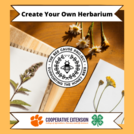
This Educator's Guide will provide the steps and materials you will need to create your own herbarium as part of the 4-H Honey Bee Project.
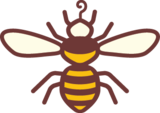
Did you know that honey bees dance? Or that they build their homes out of perfectly formed honeycomb? The Digital Hive Experience was created to educate about the inside of a beehive and our friends, the honey bees. Pair the Digital Hive Video with the companion Educator’s Guide! Included are a lesson plan mapped to the Common Core and NGSS, pre and post-assessments, discussion questions, and a KWL Chart for your students! Perfect for a classroom introduction or for programs that may not have live bees, we hope you enjoy your journey into the hive!
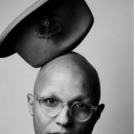
Now is the time to teach others what we have learned about bees and their many benefits! And Shabazz Larkin has done just that in his delightful children’s book The Thing About Bees: A Love Letter. In this pre-recorded webinar, we discuss his passion for learning, his process for writing as well as simple things we can all do to save bees in our own backyards!
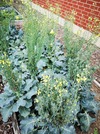
Did you know that broccoli, cauliflower, and artichokes make a lovely bouquet of flowers? The students will examine the functions of flowers and determine that some flowers are edible, even tasty! This K-2nd grade lesson includes background information, vocabulary words, step-by-step procedures, links to other lessons about plants, and plant lifecycle illustrations.
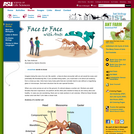
Imagine being the size of an ant. Be careful - a face-to-face encounter with an ant would be scary and potentially life-threatening! But, if you avoided being eaten, you could learn a lot about ant anatomy from a close-up view. Ants have many body parts that are normally hard to see without a magnifying glass or microscope. And each structure has its own special function.

Ever wonder how food gets from the farm to the table? The Bee Cause Project has partnered with SC Ag in the Classroom to create this unique roadmap from the farm to a local food hub and finally to the table of a local restaurant. The Educator’s Guide provides Resources, Recommended Reading List, Activities, Discussion Questions, and the full recipe for Basic Kitchen’s Collard Roll with Yuzu Dipping Sauce! The video, The Journey of Food: From the Farm to the Table can be found on The Bee Cause Project YouTube Channel.
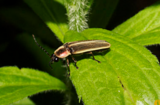
Anyone in North America can join this special community research project to help scientists map fireflies! Ten minutes once a week in your own backyard or field can help scientists understand the numbers and patterns of these unique pollinators. There is a training video and sign up information on the website for you and your students to explore!

Scout is a little honey bee with a big mission! She needs to find the last flowers of fall to get the sweet nectar that she and her sisters will turn into honey. With winter on the way, honey will provide the food to keep the hive alive until spring. But she’s got some pretty big obstacles coming her way!Lexile Level: AD840LGuided Reading Level: OGenre: Nonfiction

Students will observe the physical characteristics of flowers and explore the principles of pollination with this 3rd-5th grade lesson. From Bee Dancing to flower direction, this lesson will engage young minds and explore the miracle of flower reproduction with some amazing little pollinators!
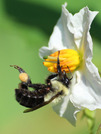
Students will observe the physical characteristics of flowers and explore the principles of pollination with this 3rd-5th grade lesson. From Bee Dancing to flower direction, this lesson will engage young minds and explore the miracle of flower reproduction with some amazing little pollinators! Attribution for image used: "Balancing Act" by LadyDragonflyCC - >;< is licensed under CC BY 2.0.
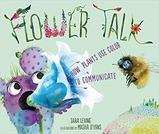
Want to know a secret? Flowers actually ‘talk’ to animals! This beautifully written and illustrated informational text is a delightful way to introduce the symbiotic relationship between plants and pollinators. Full of interesting facts and told from the perspective of a “prickly” cactus, this book will enlighten and entertain your audience.Grade Level: 2nd-5th Lexile Level: 570L Guided Reading Level: Q Genre: Informational Text

The Great Sunflower Project is a great way to use Citizen Scientist's observations of bees nationwide to create an online map of the bee population with special attention given to sunflower pollinators. Your students can join the thousands of volunteers to gather pollinator information as part of this data collection. With the bee population in decline, students can actively assist in getting to the bottom of the causes of this environmental issue. There is an introductory video provided in English and Spanish by PBS, a Quick Start Guide, maps, opportunities to observe individual data, and loads of other resources to get your students outdoors and counting pollinators!
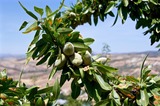
Bees are incredibly important to the production of almonds! In this 3rd-5th grade lesson, students will learn how almonds go from the farm to the table while distinguishing between facts and opinions about the growing season! This lesson includes background information, vocabulary words, video links, step-by-step procedures, and links to other valuable lessons.
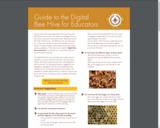
Did you know that honey bees dance? Or that they build their homes out of perfectly formed honeycomb? The Digital Hive Experience was created to educate about the inside of a beehive and our friends, the honey bees. Pair the Digital Hive Video with the companion Educator’s Guide! Included are a lesson plan mapped to the Common Core and NGSS, pre and post-assessments, discussion questions, and a KWL Chart for your students! Perfect for a classroom introduction or for programs that may not have live bees, we hope you enjoy your journey into the hive!
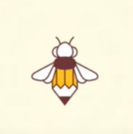
Did you know that honey bees can dance? Do you know why bees build honeycombs in the shape of a hexagon? Do you know how many eyes honey bees have? Bees live a secret life inside their hive...but NOW we can see what goes on in a live hive. The Bee Cause and its partners are on a mission to inspire children to learn about and protect these precious pollinators. That's why we've created the Digital Bee Hive Experience - to educate our community of learners about this vital ecosystem.